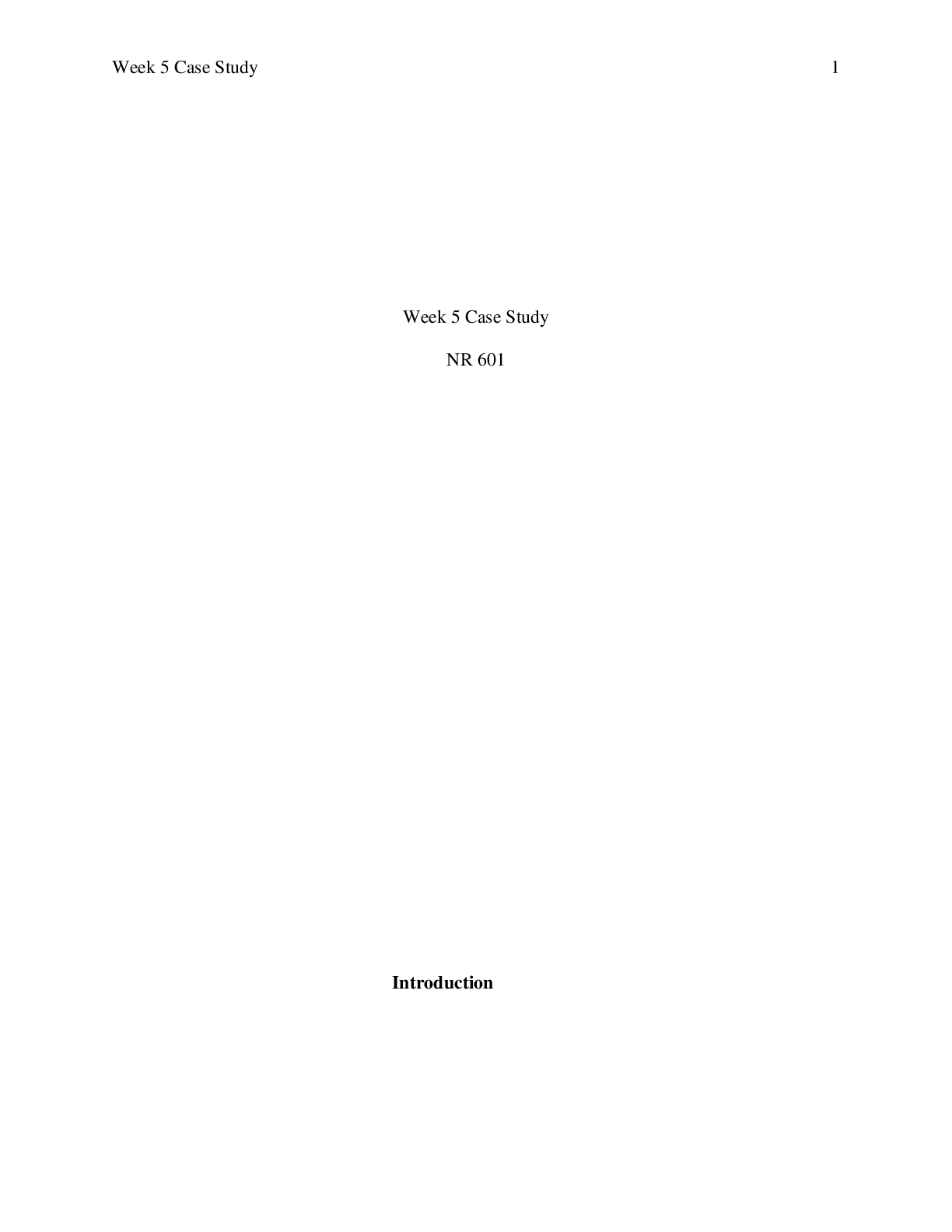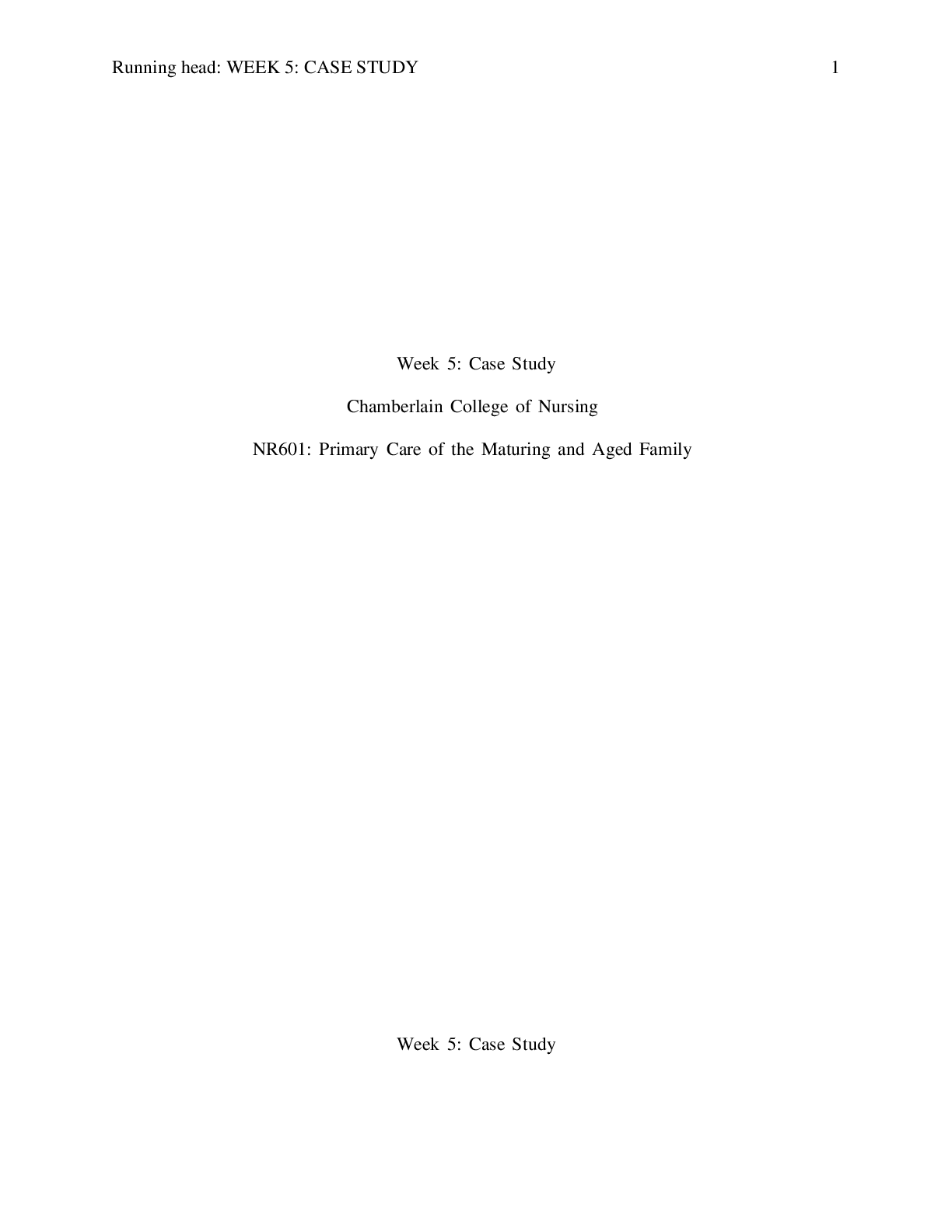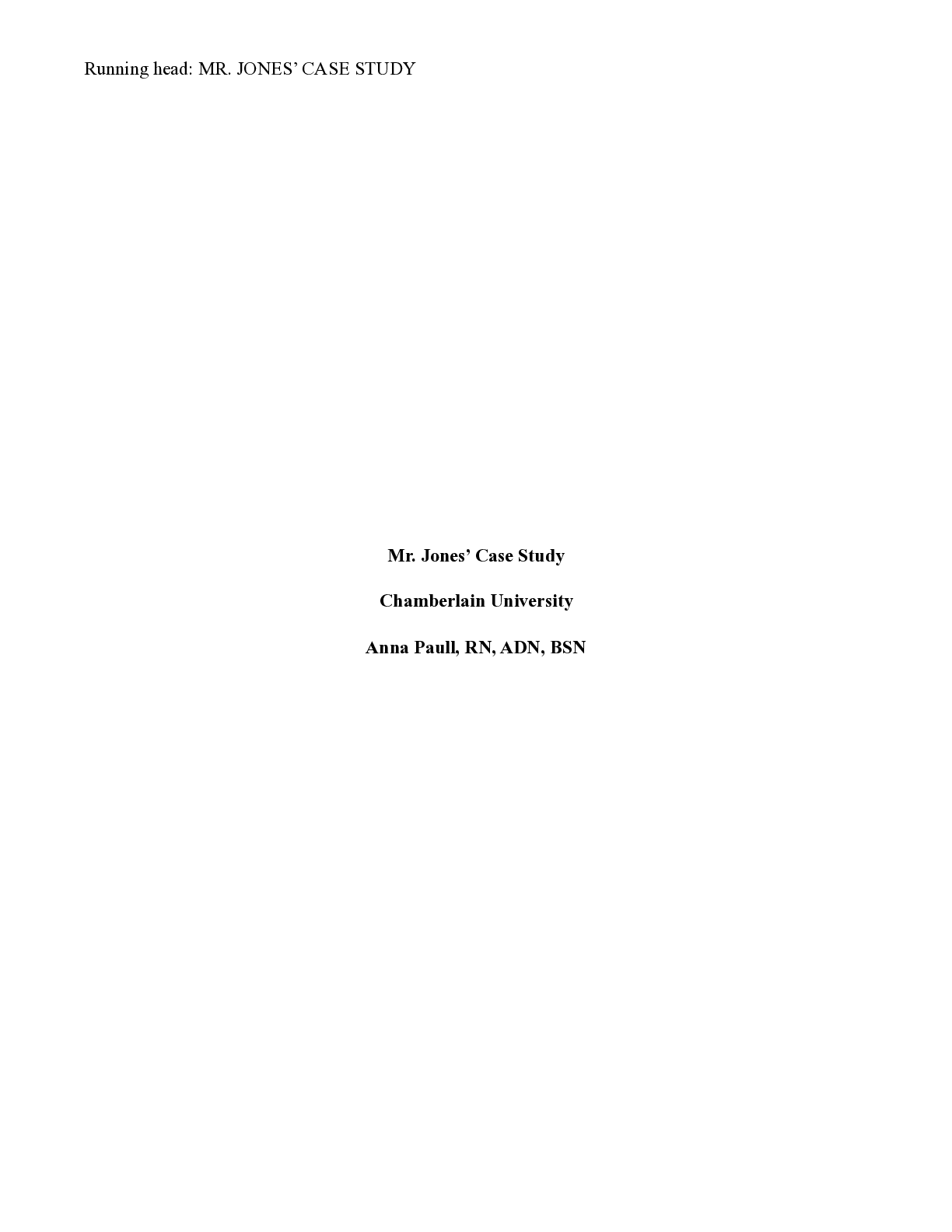*NURSING > CASE STUDY > Chamberlain College of NursingNR 601NR601 _week 5 case study paper. (All)
Chamberlain College of NursingNR 601NR601 _week 5 case study paper.
Document Content and Description Below
CASE STUDY Week Five Case Study Chamberlain University NR601:Primary Care of the Maturing and Aged Family Practicum CASE STUDY 2 Week Five Case Study The purpose of this paper is to gain a bette... r understanding on how to manage multiple disease processes that are commonly seen in the family practice setting. Completion of this assignment will help increases insight on how to better balance multiple disease processes and their treatments while at the same time being aware of contraindications and adverse effects of the treatments for each disease. In addition to how treatment should be provided it will also increases cost awareness and understanding of the importance of ensuring low cost treatment plans. Assessment Primary Diagnosis Type 2 Diabetes Mellitus with other specific complications (E11.69) Pathophysiology. Diabetes Mellitus is a result of multiple factors that include both genetic predisposition and environmental elements. These factors have an effect on tissue sensitivity and the functionality of beta-cells. The onset of type 2 diabetes is typically later in life and occurs when the persons body begins to not produce the proper amount of insulin or cells begin to ignore the insulin produced. As cells continue to resist the insulin, the need for insulin increases, eventually causing the pancreas to cease insulin production (Skyler et al., 2017). pertinent positive findings. The pertinent positives are a decreased GFR, elevated glucose, elevated A1C, increased hunger and thirst, night time urination, increased frequency in urination, increased fatigue. The patients GFR was only slight low and a decrease in GFR is a common age related decline and is not abnormal for his age (National Kidney Foundation, 2019). An increased blood glucose level causes the kidneys to work over time to excrete the excess glucose taking fluid along with it. This in turn increases urination frequency, causing dehydration and increasing thirst. The associated fatigue occurs due to the persistent high glucose levels that impair the conversion of glucose to energy as well as the dehydration from increased urination (Skyler at al., 2017). [Show More]
Last updated: 2 years ago
Preview 1 out of 14 pages

Buy this document to get the full access instantly
Instant Download Access after purchase
Buy NowInstant download
We Accept:

Reviews( 0 )
$9.50
Can't find what you want? Try our AI powered Search
Document information
Connected school, study & course
About the document
Uploaded On
Sep 29, 2021
Number of pages
14
Written in
Additional information
This document has been written for:
Uploaded
Sep 29, 2021
Downloads
0
Views
129

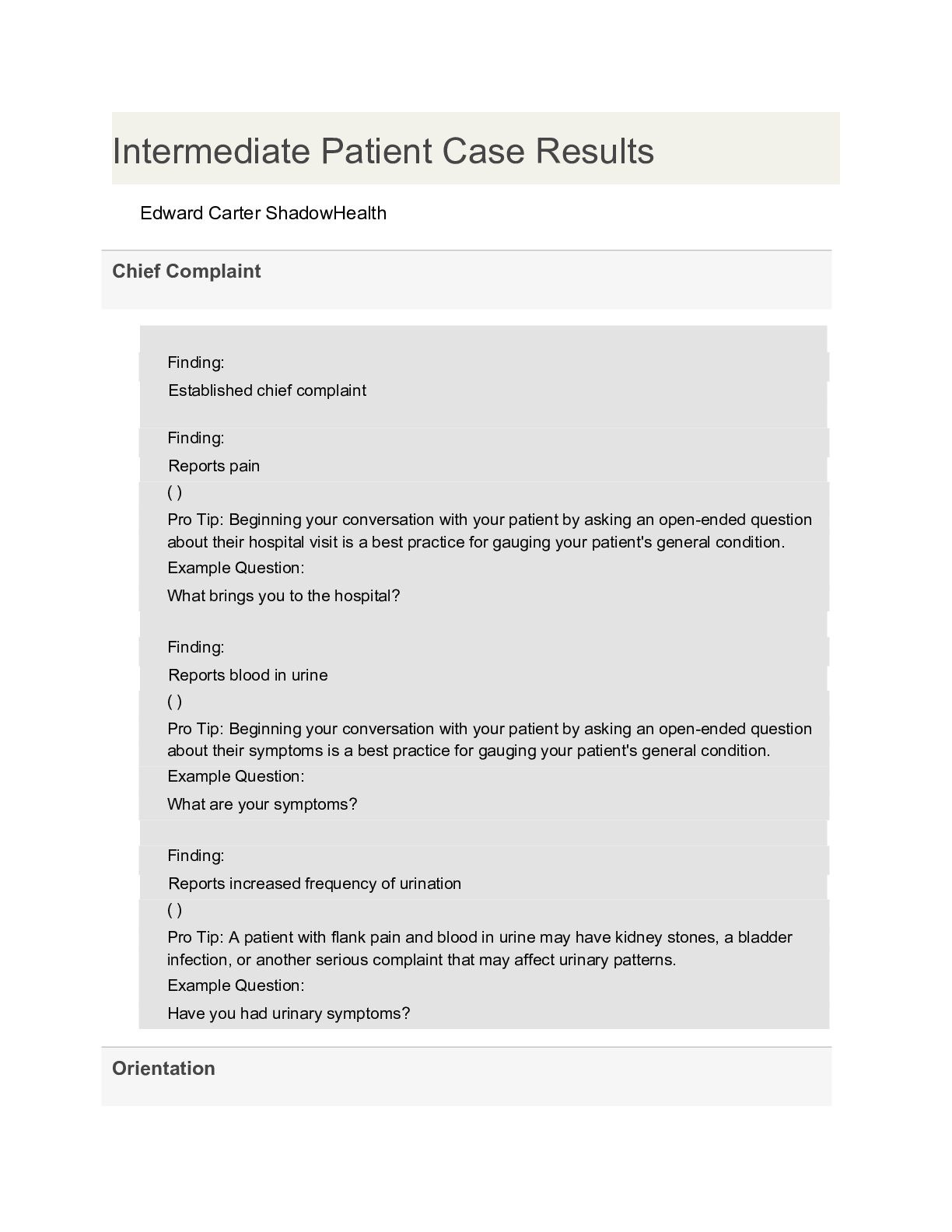

.png)








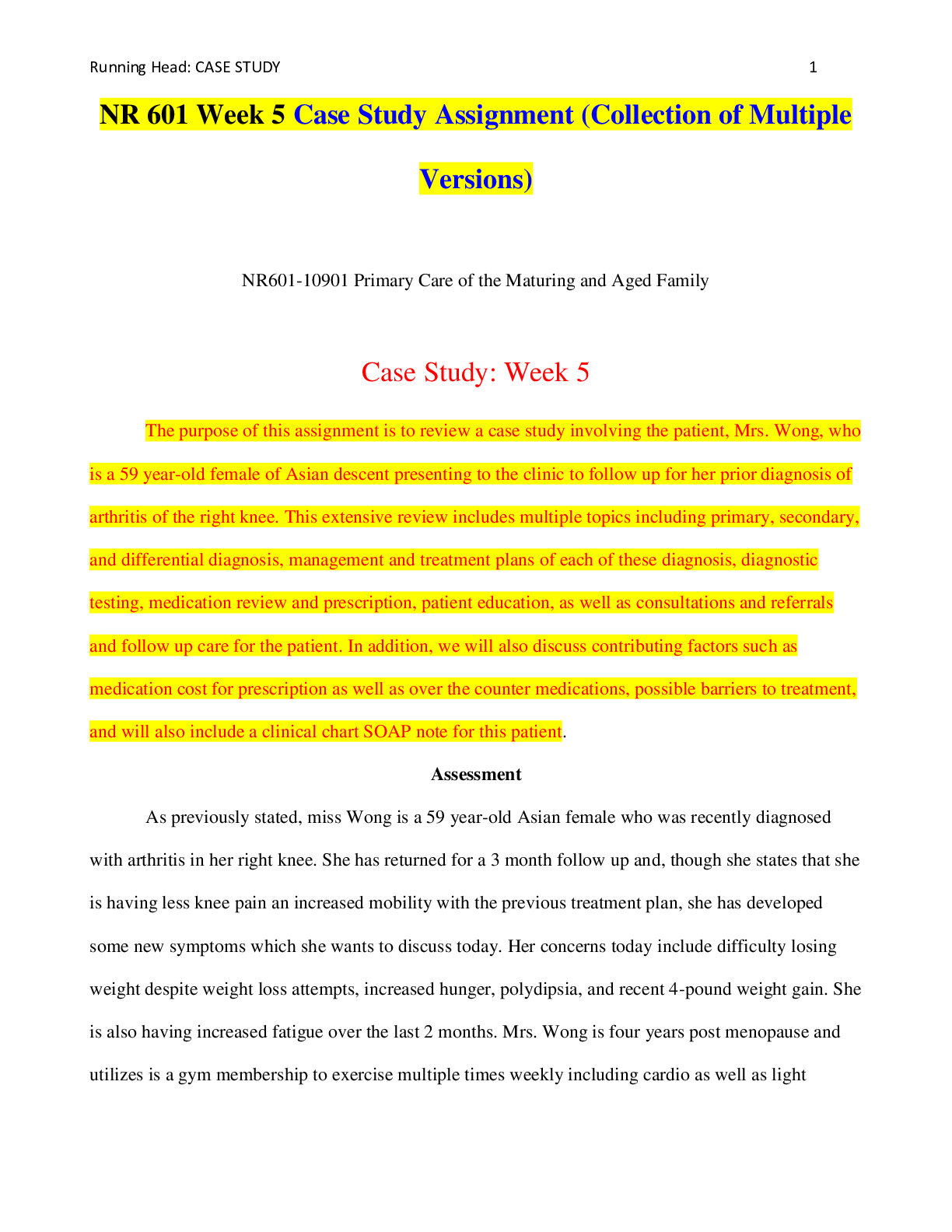
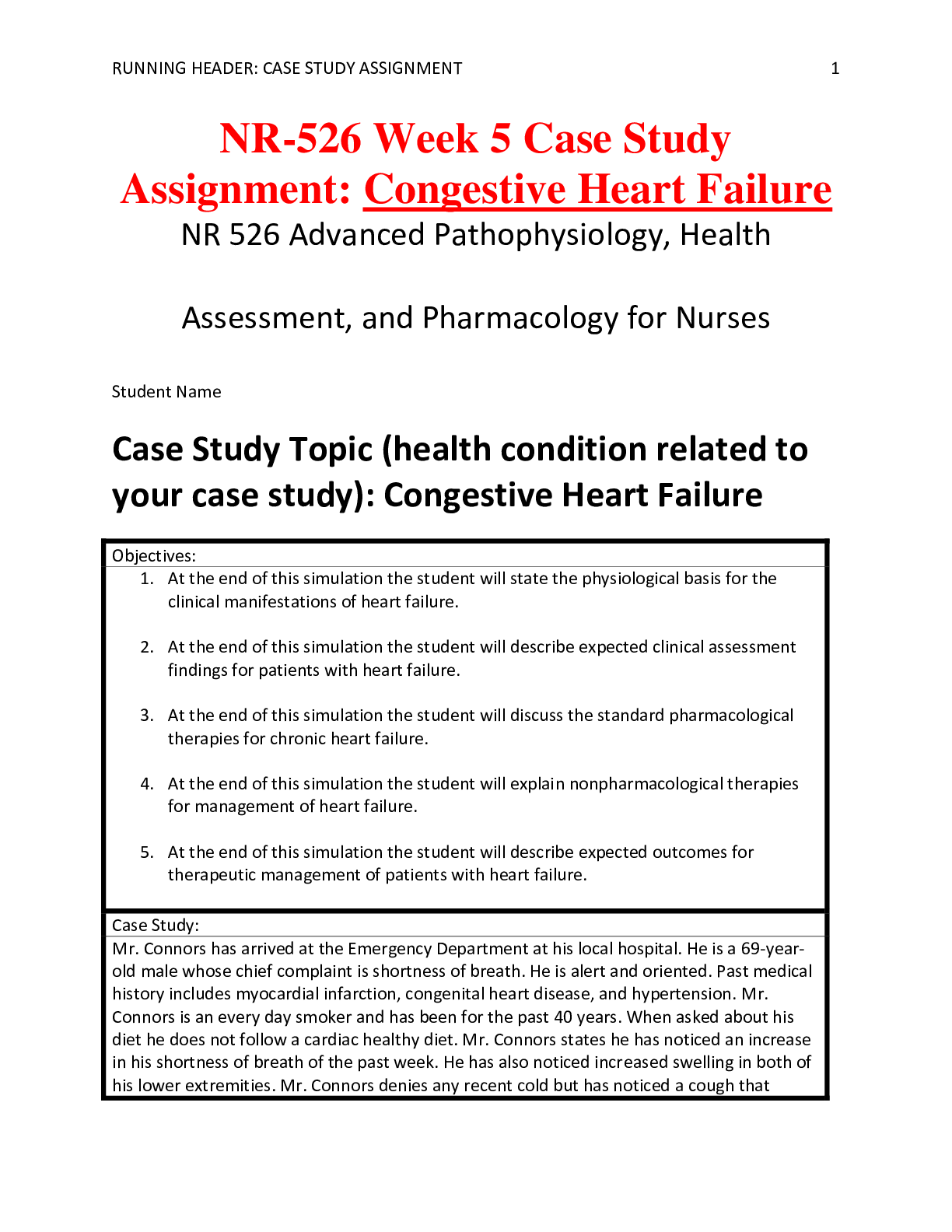

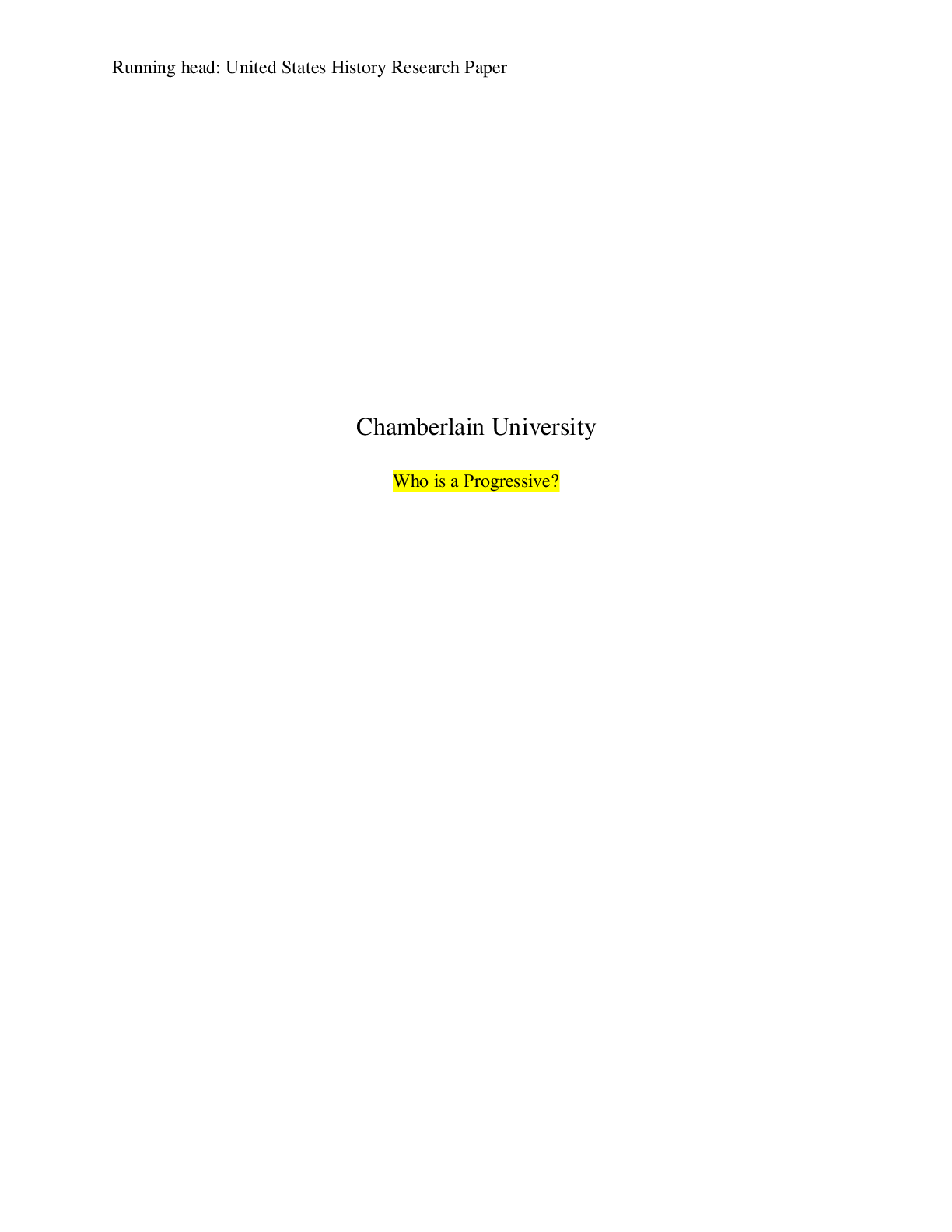
.png)


